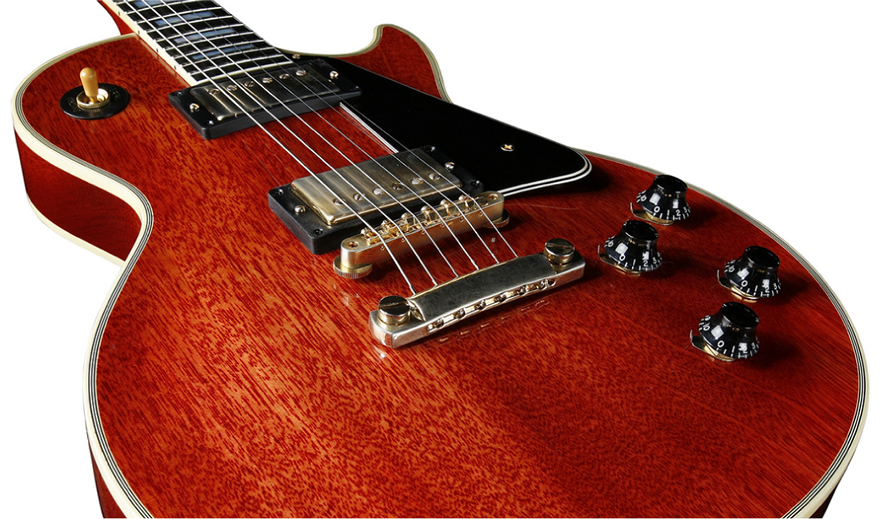An Introduction to Wood Species, Part 7: Mahogany

This Wood Species series of entries comes to us from guest writer Rob Wilkey, an Atlanta-based woodworker and industrial designer whose expertise is in small home goods, furniture, and large installations.
Over the next few articles, we'll be analyzing a number of common imported wood species. This week's featured species:

Mahogany is harvested from trees of the genus Swietenia, whose natural range is in Central and South America. The lumber of these trees is extremely popular, and has been exported throughout the world for centuries. Like cherry, mahogany is prized for its favorable working properties, as well as its durability and beautiful color. Mahogany is initially a lighter pinkish brown hue, and can darken to a rich, deep reddish-brown over time.

The wood is straight-grained, diffuse-porous, and suffers from very little shrinkage and seasonal movement. At 900lbf Janka, mahogany is soft enough to be cut and sanded quickly and easily, but is hard enough to resist dents and scratches. These properties make it an ideal lumber for every kind of woodworking. The wood also glues and stains well, and becomes even more beautiful under a good coat of finish. In fact, with a glossy finish, the wood will refract light so vibrantly that it changes shades depending on your viewing angle. This effect enhances areas of figured grain, as can be seen on the side table below, built by the talented Todd Clippinger.

Mahogany has a number of qualities that make it especially desirable for certain applications. The wood is extremely resistant to decay and water damage, and has a low enough density to be rather buoyant, making it ideal for boatbuilding. Mahogany can be found on all sorts of watercraft, from old wooden ships to modern speedboats, and even wooden kayaks, such as this one from Nick Schade.

Mahogany, like maple, is a tonewood. Unlike maple, however, mahogany is desired for its comparatively warmer and darker tone. The wood's light weight and availability in large, thick boards makes it an ideal candidate for solid-body electric guitars.

Mahogany is also used for furniture, cabinetry, paneling, flooring, carvings, and a myriad of other products. Due to its enduring popularity, however, mahogany has been vastly overharvested. In fact, every species of mahogany is under CITES trade restrictions. This has resulted in a number of mahogany substitutes becoming popular, and even bearing the mahogany name. The only 'genuine' mahogany species on the market today are Cuban and Honduran Mahogany, while others, such as African and Philippine Mahogany exhibit similar properties, but aren't actually in the Swietenia genus. No substitutes can truly match the natural beauty, workability and durability that genuine mahogany exhibits.
In next week's article, we'll look at rosewood—a lumber prized for both its beautiful coloration and beautiful scent.
Material Matters: Wood
Species:
» An Introduction to Wood Species, Part 1: Properties & Terminology
» An Introduction to Wood Species, Part 2: Pine
» An Introduction to Wood Species, Part 3: Oak
» An Introduction to Wood Species, Part 4: Maple
» An Introduction to Wood Species, Part 5: Walnut
» An Introduction to Wood Species, Part 6: Cherry
» An Introduction to Wood Species, Part 7: Mahogany
» An Introduction To Wood Species, Part 8: Rosewood
» An Introduction To Wood Species, Part 9: Ebony
» An Introduction To Wood Species, Part 10: Teak
How Boards are Made:
» How Logs Are Turned Into Boards, Part 1: Plainsawn
» How Logs Are Turned Into Boards, Part 2: Quartersawn
» How Logs Are Turned Into Boards, Part 3: Riftsawn
Wood Movement:
» Wood Movement: Why Does Wood Move?
» Controlling Wood Movement: The Drying Process
» Dealing with Wood Movement: Design and Understanding
-
oFavorite This
-
Q1Comment
K
{Welcome
Create a Core77 Account
Already have an account? Sign In
By creating a Core77 account you confirm that you accept the Terms of Use
K
Reset Password
Please enter your email and we will send an email to reset your password.

Comments
I am building a guitar and am using mahogany for the body. I want my guitar to look similar to the picture of the guitar on this page. Do you know how I could achieve this finish? Would I stain it? Or use a grain filler? Or something else? Thanks :)